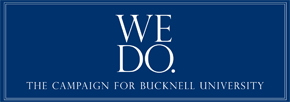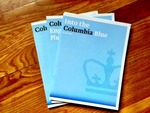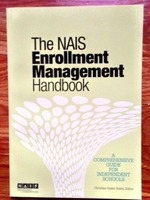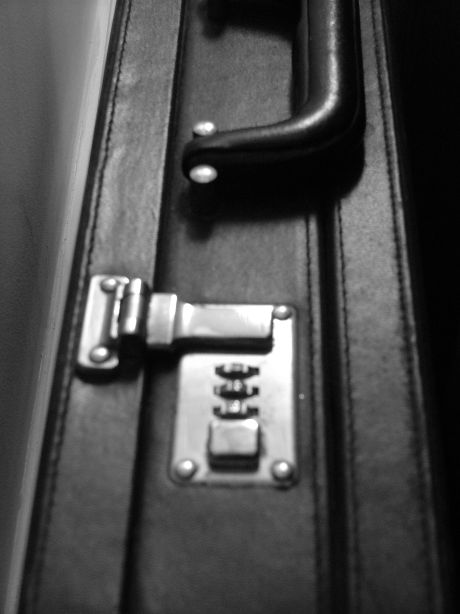 When I lived in Camden, Maine, I used to hike Maiden’s Cliff quite a lot. It’s the site I chose for Evie’s fall. The cliff’s namesake maiden was 11-year-old Elenora, who fell reaching for her hat in 1864. Several years after it happened, her sister recounted the story to The Camden Herald like this: “I remember exactly how she looked. When I last saw her she was sitting on a rock near the edge of the cliff trying to hold on to her hat in the wind. I turned to speak to my friend and heard a scream, ‘My hat!’ When I looked where Elenora had been sitting, she was gone.” I love Tina Roth Eisenberg’s (aka swissmiss) talk on side projects and how necessary they are for those of us in creative fields. What she found is that her side projects are actually front and center in her professional life. And I would say the same for me.
When I lived in Camden, Maine, I used to hike Maiden’s Cliff quite a lot. It’s the site I chose for Evie’s fall. The cliff’s namesake maiden was 11-year-old Elenora, who fell reaching for her hat in 1864. Several years after it happened, her sister recounted the story to The Camden Herald like this: “I remember exactly how she looked. When I last saw her she was sitting on a rock near the edge of the cliff trying to hold on to her hat in the wind. I turned to speak to my friend and heard a scream, ‘My hat!’ When I looked where Elenora had been sitting, she was gone.” I love Tina Roth Eisenberg’s (aka swissmiss) talk on side projects and how necessary they are for those of us in creative fields. What she found is that her side projects are actually front and center in her professional life. And I would say the same for me.
I’ve always known that in the age of brand storytelling, my fiction-writing skills inspire my marketing work. But under the heading of “use it or lose it,” I was surprised to discover — after taking a hiatus from fiction writing — that the marketing work I do for schools, colleges and universities has actually improved my creative work. Having to hold the attention of teenage prospective students looking for colleges has forced me to focus on compelling hooks and pacing more than ever before. With some recent essay and story success I decided to take the leap to write a novel. So when my novelist friend Elizabeth Mosier blog tagged me in her post on The Next Big Thing and asked me to write about my novel in progress and share it here on School of Thought, I agreed. I hope my “side project” inspires you to feed your own creative work.
What is the working title of your book?
Coma Girl: The Late Great Blooming of Evelyn Dupree.
Where did the idea come from for the book?
In some ways the old “I wish I’d known then what I know now” adage is part of it. At the heart of the story is the dichotomy between two friends and their approach to life: One grabs as many goodies as she can; the other is ever on the side of the pool waiting to dive in. Then something happens to make her dive in — how will she use the finite time she has left?
What genre does your book fall under?
General Fiction/Women’s Fiction
Which actors would you choose to play your characters in a movie rendition?
The two best friends at the center of the story are supposed to look similar to one another but one is a lesser version of the other, having not quite come into her own. Perhaps Bryce Dallas Howard and Jessica Chastain, who look somewhat alike. Or maybe Gwyneth Paltrow for the friend and Emily Mortimer for the main character. For the love interests, there are two good guys and an insincere but charming guy. For the good guys, someone like Matthew Macfadyen, Andrew Lincoln or Chiwetel Ejiofor. For the smarmy guy, a Bradley Cooper type.
What is the one-sentence synopsis of your book?
A woman in her twenties awakens from a coma in her forties and has to reinvent her life, reconciling the actions that led to her accident and coma and making peace with the people who in some ways stole her original life.
How long did it take you to write the first draft of your manuscript?
Two years. The first third went like wildfire, complete in three months. Then I got stuck for several months on the second section and put it aside because I was also in the midst of multiple client projects. But once I figured out the middle section, the last third flew.
What other books would you compare this story to within your genre?
The Time Traveler’s Wife and Her Fearful Symmetry, both by Audrey Niffenegger, and some Alice Hoffman novels in which the world feels real with just a touch of otherworldliness.
Who or what inspired you to write this book?
My desire to write the book came after a night with my book club friends in which several confessed they had not read the heady literary novel assigned but had all passed around a popular, fun novel. I wanted to write a book like that — one that my smart women friends would want to read not because they were “supposed” to but because they were enthralled.
What else about your book might pique the reader’s interest?
The action moves from a summer cottage enclave in Maine to New York City and L.A., and involves a political campaign, a paparazzi frenzy, new research on comas, and a mystery of mistaken identity.
As I work on the novel I continue to write shorter pieces including upcoming memoir essays in Narrative and Memoir.
Who have you tagged?
Now you can read about the upcoming works of these fabulous writer friends: Susan Barr-Toman, author of the novel When Love was Clean Underwear, Kristin Ohlson, author of Stalking the Divine and coauthor of Kabul Beauty School, Clark Knowles, whose stories have appeared in Glimmertrain, The Black Warrior Review, Nimrod and other publications, Laurel Saville, author of the memoir Unraveling Anne, and Tom Schabarum, author of Airstreaming and The Palisades among other works.
 Tuesday, January 1, 2013 at 10:27AM
Tuesday, January 1, 2013 at 10:27AM  Traveling to Beijing to begin research on the brand story for the new school Keystone Academy – a Grade 1 – 12 school you will be hearing more and more about.
Traveling to Beijing to begin research on the brand story for the new school Keystone Academy – a Grade 1 – 12 school you will be hearing more and more about. Working with Bucknell University to launch its $500 Million capital campaign. To develop the digital, social and print strategy I partnered with Michael Bierut and Jesse Reed at Pentagram Design.
Working with Bucknell University to launch its $500 Million capital campaign. To develop the digital, social and print strategy I partnered with Michael Bierut and Jesse Reed at Pentagram Design. Attending a huge college fair in Washington D.C. and seeing my work on several tables.
Attending a huge college fair in Washington D.C. and seeing my work on several tables. Having my chapter “From Marketing Strategy to Brand Story: Telling the Story of Independent Education” in Chris Baker’s new NAIS (National Association of Independent Schools) book The NAIS Enrollment Management Handbook.
Having my chapter “From Marketing Strategy to Brand Story: Telling the Story of Independent Education” in Chris Baker’s new NAIS (National Association of Independent Schools) book The NAIS Enrollment Management Handbook. Having several of my personal essays published including in the Sunday New York Times Modern Love column.
Having several of my personal essays published including in the Sunday New York Times Modern Love column.















